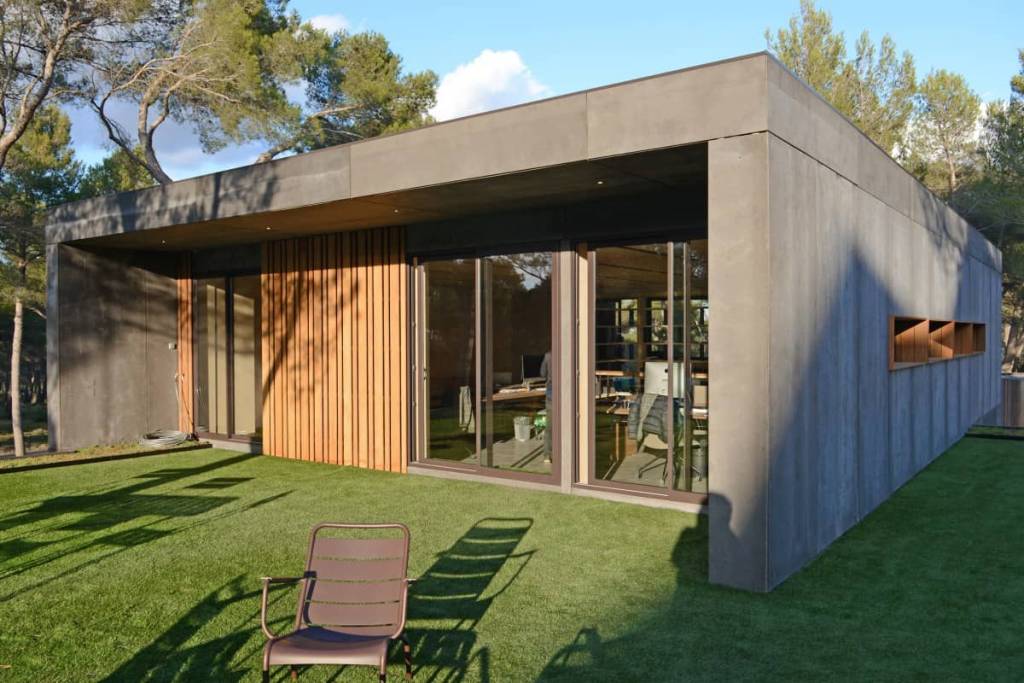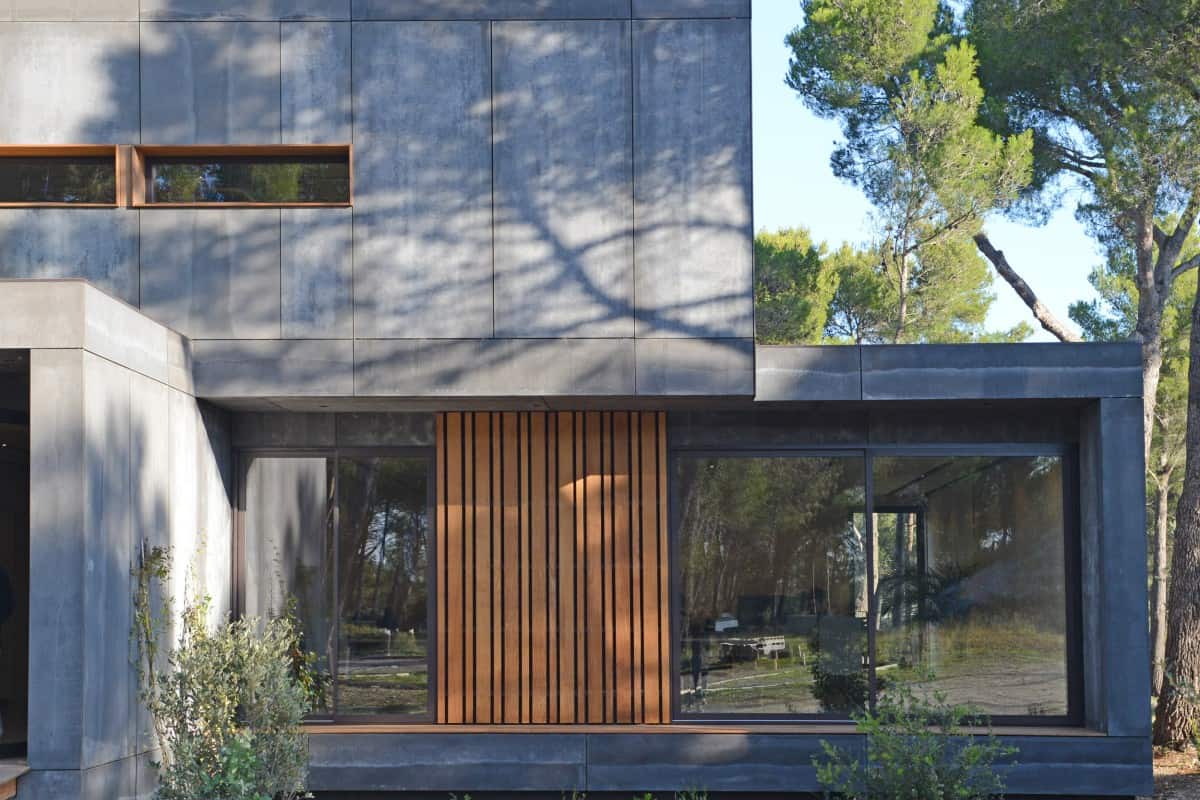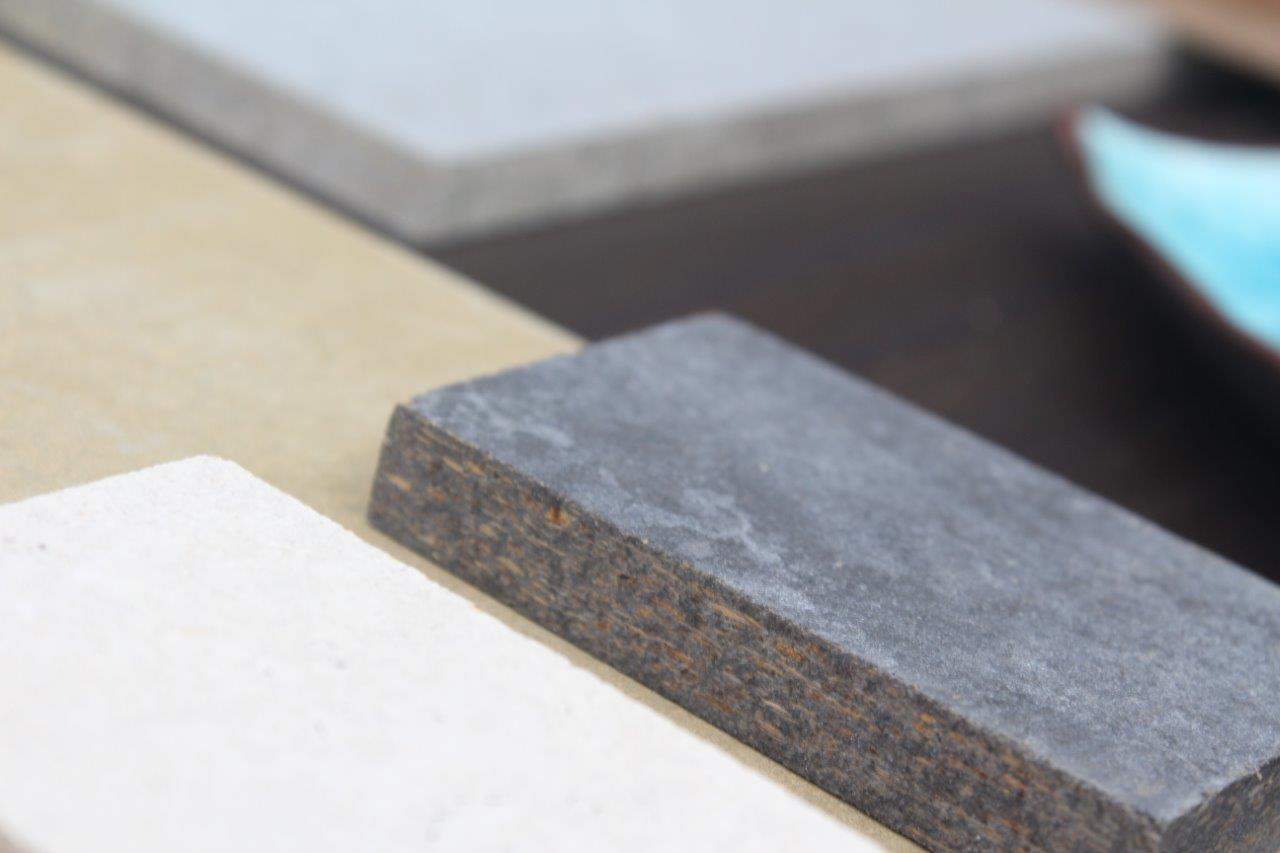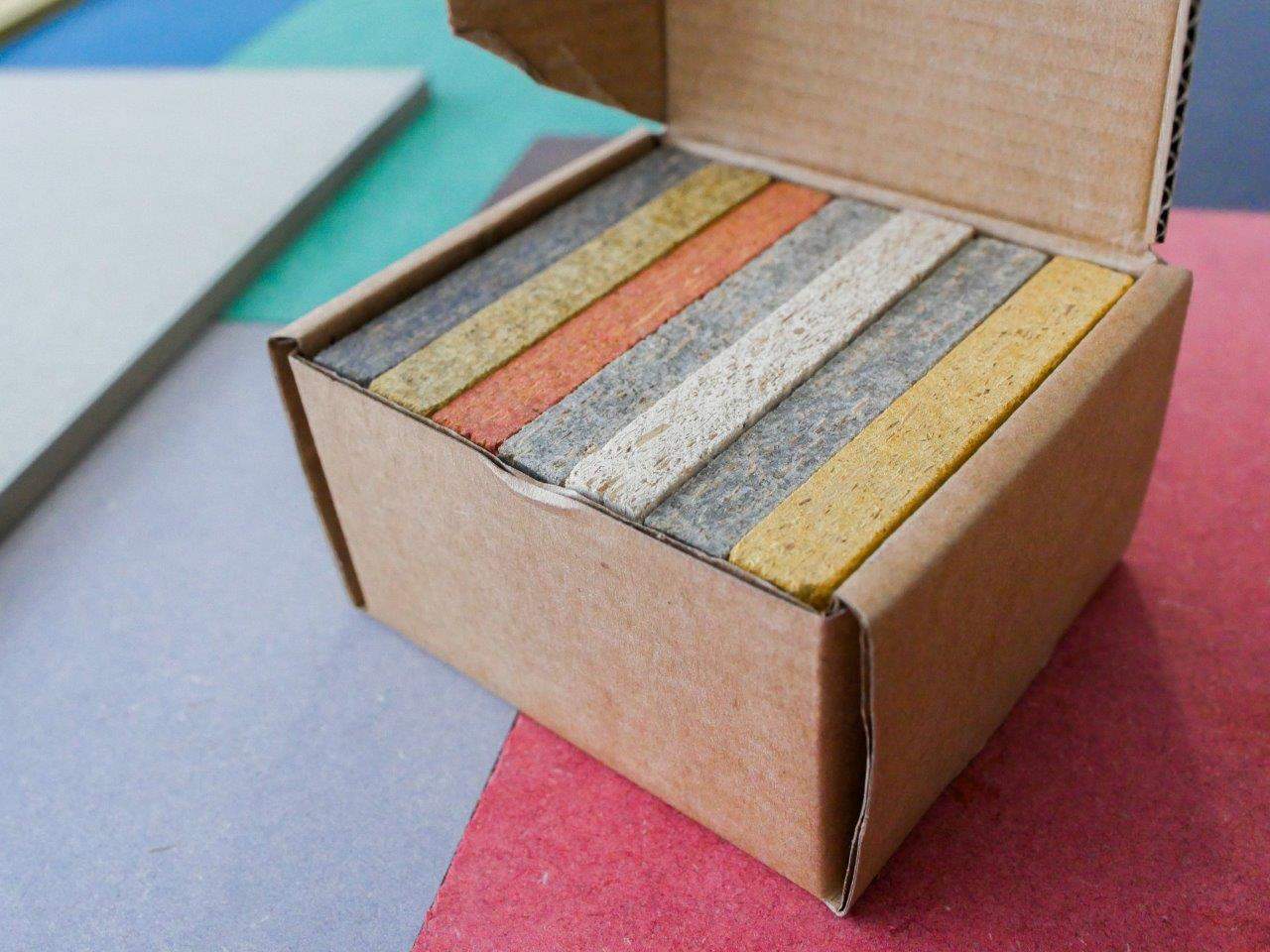
VIROC is a composite panel made of wood and cement particles.
Providing this material with a combination of flexibility from wood, strenght and resistance from cement, it allows it to be suitable for a wide range of different applications, for both exterior and interior use.
If you have any question or would like to get your quote do not hesitate to contact us, through this link.
Applications
Download Documents



Non-Toxic: It does not contain dangerous volatile compounds and is free of silica, asbestos (asbestos) and formaldehyde.
Acoustic Insulator: Due to its large weight, it has good sound insulation properties. The sound insulation index varies according to the thickness of the panel, with a 31 or 37 dB resistance to airborne sound depending on whether the thickness is 8 or 22 mm, respectively.
Load Resistant: The panel’s mechanical resistance to bending allows it to be used as a load-bearing structural element. It is therefore used in floors and as a support for roofs.The characteristic bending tensile strength is 10.5 N/mm2 with a modulus of elasticity of 6000 N/mm2.
Easy installation: It can be cut, drilled and sanded. The tools and fastening systems used for Viroc panels are identical to those used for wood.
Fire-resistant: Prevents the spread of fire. According to ignitability tests, it is classified as B-s1, d0, according to standard EN 13501.
Insect Resistant: It does not degrade with the action of living organisms such as fungi, termites, or any type of insects.
Thermal Insulator: It has good thermal resistance characteristics, which means that it works as insulation in both cold and hot temperatures.
Water Repellent: Does not flake under the action of water. Simultaneously impermeable to water and permeable to water vapour.
Nailing: Nailing is one of the possible mounting options. This option is only used on interior wooden structures.
Cementing: The panel can be glued onto metal or wooden support structures.
Screwing: The most usual way to mount Viroc panels, due to its ease of application and efficiency, is using screws. The support structure can be metallic or wooden. Due to material similarities, the use of a wooden structure is the most suitable option.
Cutting: The Viroc panel can be machined just like wood. A portable saw can be used for thicknesses up to 19 mm. For larger thicknesses or large cutting volumes, a fixed bench saw should be used, as it improves surface quality and makes it easier to comply with hygiene and safety requirements.
Drilling: Viroc panels can be drilled with a conventional drill, without percussion, using drill bits suitable for drilling metal.
Sanding: Viroc panels can be supplied ready adjusted/sanded. Once sanded, wood particles become visible on the surface of the panel. The thickness tolerance on the sanded panel is ± 0.3 mm. Panel joints can be sanded manually in the event of any mismatch between panels.
Milling and Lathing: Edges can be machined in bevel, tongue groove, recess or half-lap. Milling cutters must be tungsten carbide.

